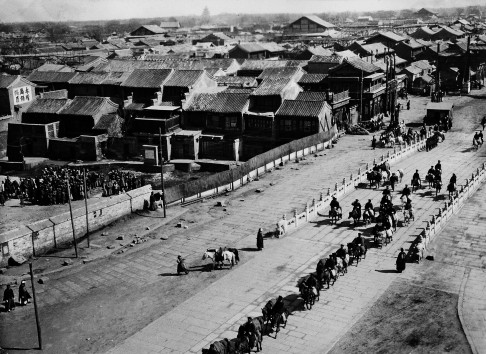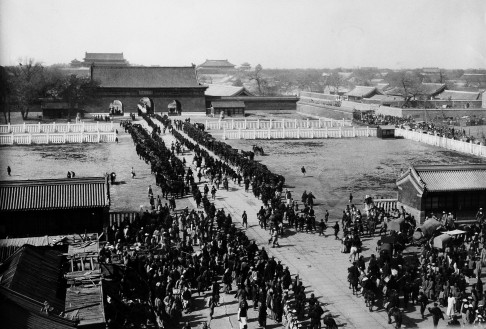Advertisement
Shaman dancers, coolies and suffragettes: rare photos of 1900s Beijing discovered from Austrian archive
Collection sheds light on daily life in the capital dating back a century
Reading Time:3 minutes
Why you can trust SCMP

When a relative of a long dead Austro-Hungarian navy soldier approached Gerd Kaminski, a China scholar in Vienna, in 2007, she pointed him towards a treasure trove of thousands of photos of Beijing, many of which were a century old.
Kaminski, director of the Austrian Institute for China and Southeast Asia Studies in Vienna, worked his way through the photos and published a selection along with other photos he was given by descendants of Austrian diplomats and traders in imperial China.
“These photos give precious insights into daily urban life in Beijing a century ago,” he said. “Many of the buildings don’t exist anymore and traditions seen in the photos have been lost in time.”
Advertisement
The photos show men dancing with animal masks, camels and traders on Changan Avenue - now Beijing’s 12-lane main thoroughfare - tea houses, the Imperial Court and women disfigured by footbinding and demonstrating for the right to vote.
Click on the photos below to view full-screen versions
or click here to view them as a slideshow
or click here to view them as a slideshow
SCMP
 |
| A view of Beijing's south as the emperor returns to the city after the suppression of the Boxer rebellion in 1901. Photo by Von Rosthorn |
SCMP
| Undated photo taken at a night market in Beijing. Photo by Heinz von Perckhammer, an Austrian marine navy soldier from Meran (now in Italy) who lived in China between 1914 and 1927. After the collapse of the Austro-Hungarian Empire and his retirement from the military, he worked as a photographer in Beijing |
SCMP
Advertisement
Select Voice
Choose your listening speed
Get through articles 2x faster
1.25x
250 WPM
Slow
Average
Fast
1.25x
